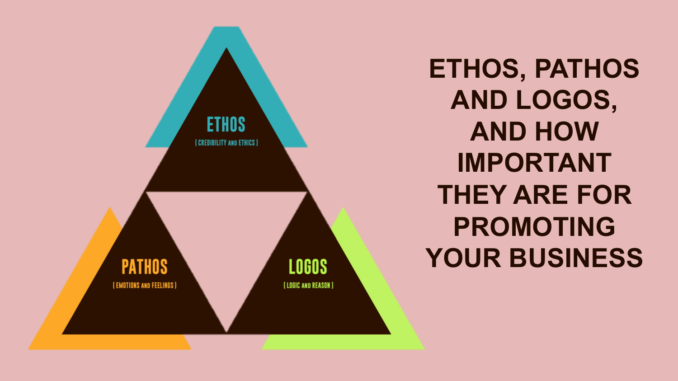
Introduction In the intricate tapestry of digital marketing, the ancient persuasive appeals of Ethos, Pathos, and Logos, conceptualized by Aristotle, are more than historical concepts; they are foundational tools for effective communication. Brands today navigate a complex digital landscape where these three elements play a crucial role in shaping narratives, building relationships, and driving conversions. Understanding and effectively applying Ethos, Pathos, and Logos can dramatically enhance a brand’s resonance and impact in the digital realm. 1. Ethos: The Bedrock of Trust and Credibility Ethos is the appeal to ethics, representing credibility and trustworthiness. In the digital marketing landscape, ethos is the cornerstone of a brand’s identity. Establishing a strong ethos means building a foundation of trust between the brand and its audience. Building Ethos in Digital Marketing: Authenticity and Transparency: Today’s consumers value authenticity. Brands that share their true story, mission, and values, and engage in transparent communication are more likely to build trust. Thought Leadership: Positioning your brand as a knowledgeable leader in your industry through insightful blogs, speaking engagements, and educational content can significantly boost credibility. Consistent Brand Voice: A consistent voice across all platforms reinforces a brand’s identity. Consistency in messaging, tone, and style helps in building a reliable brand image. 2. Pathos: Emotional Resonance with the Audience Pathos, the appeal to emotion, is about connecting with the audience on an emotional level. Emotional engagement is a powerful catalyst for consumer action. Harnessing Pathos in Digital Marketing: Storytelling: Leveraging stories that resonate with the audience’s experiences, aspirations, or pain points can create a powerful emotional connection. Visual Impact: Utilizing emotionally charged imagery, videos, and graphics in social media and digital campaigns can make a memorable impact. Engaging Content: Creating content that sparks joy, nostalgia, or even outrage can drive engagement and sharing, increasing brand visibility. 3. Logos: Rationality and Reason Logos, the appeal to logic, involves using rational arguments and evidence to persuade. In a world saturated with information, clear and logical communication can effectively cut through the noise. Implementing Logos in Digital Marketing: Data-Driven Content: Presenting statistics, research findings, and case studies can validate a brand’s message and offerings. User Reviews and Testimonials: Sharing customer experiences and reviews provides tangible evidence of a product’s value and effectiveness. Informative Content: Detailed blog posts, whitepapers, and explainer videos that provide valuable information aid in rational decision-making. Balancing Ethos, Pathos, and Logos The most impactful branding and marketing strategies are those that achieve a balance between ethos, pathos, and logos. While ethos builds trust, pathos creates an emotional connection, and logos offers logical reasoning to back up choices. Depending on the target audience and context, the emphasis on each element may vary, but their integration is key to persuasive communication. Conclusion In today’s digital marketing landscape, the ancient principles of Ethos, Pathos, and Logos are not merely theoretical concepts but practical tools for building strong, resonant brands. By skillfully integrating these elements, brands can create compelling narratives, foster deeper connections with their audience, and drive meaningful engagement in an increasingly digital world.

Leave a Reply